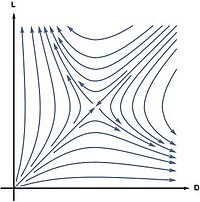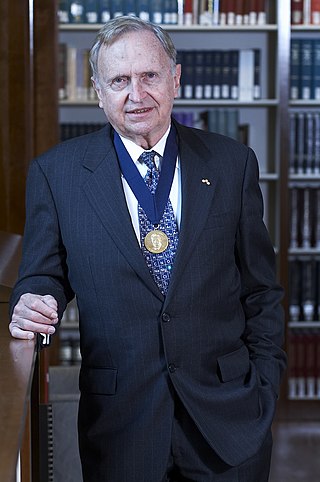Origins
What is the origin of homochirality in living organisms?
Symmetry breaking
Theories for the origin of homochirality in the molecules of life can be classified as deterministic or based on chance depending on their proposed mechanism. If there is a relationship between cause and effect — that is, a specific chiral field or influence causing the mirror symmetry breaking — the theory is classified as deterministic; otherwise it is classified as a theory based on chance (in the sense of randomness) mechanisms. [16]
Another classification for the different theories of the origin of biological homochirality could be made depending on whether life emerged before the enantiodiscrimination step (biotic theories) or afterwards (abiotic theories). Biotic theories claim that homochirality is simply a result of the natural autoamplification process of life—that either the formation of life as preferring one chirality or the other was a chance rare event which happened to occur with the chiralities we observe, or that all chiralities of life emerged rapidly but due to catastrophic events and strong competition, the other unobserved chiral preferences were wiped out by the preponderance and metabolic, enantiomeric enrichment from the 'winning' chirality choices.[ citation needed ] If this was the case, remains of the extinct chirality sign should be found. Since this is not the case, nowadays biotic theories are no longer supported.
The emergence of chirality consensus as a natural autoamplification process has also been associated with the 2nd law of thermodynamics. [17]
Deterministic theories
Deterministic theories can be divided into two subgroups: if the initial chiral influence took place in a specific space or time location (averaging zero over large enough areas of observation or periods of time), the theory is classified as local deterministic; if the chiral influence is permanent at the time the chiral selection occurred, then it is classified as universal deterministic. The classification groups for local determinist theories and theories based on chance mechanisms can overlap. Even if an external chiral influence produced the initial chiral imbalance in a deterministic way, the outcome sign could be random since the external chiral influence has its enantiomeric counterpart elsewhere.
In deterministic theories, the enantiomeric imbalance is created due to an external chiral field or influence, and the ultimate sign imprinted in biomolecules will be due to it. Deterministic mechanisms for the production of non-racemic mixtures from racemic starting materials include: asymmetric physical laws, such as the electroweak interaction (via cosmic rays [18] ) or asymmetric environments, such as those caused by circularly polarized light, quartz crystals, or the Earth's rotation, β-Radiolysis or the magnetochiral effect. [19] [20] The most accepted universal deterministic theory is the electroweak interaction. Once established, chirality would be selected for. [21]
One supposition is that the discovery of an enantiomeric imbalance in molecules in the Murchison meteorite supports an extraterrestrial origin of homochirality: there is evidence for the existence of circularly polarized light originating from Mie scattering on aligned interstellar dust particles which may trigger the formation of an enantiomeric excess within chiral material in space. [14] : 123–124 Interstellar and near-stellar magnetic fields can align dust particles in this fashion. [22] Another speculation (the Vester-Ulbricht hypothesis) suggests that fundamental chirality of physical processes such as that of the beta decay (see Parity violation) leads to slightly different half-lives of biologically relevant molecules.
Chance theories
Chance theories are based on the assumption that "Absolute asymmetric synthesis, i.e., the formation of enantiomerically enriched products from achiral precursors without the intervention of chiral chemical reagents or catalysts, is in practice unavoidable on statistical grounds alone". [23]
Consider the racemic state as a macroscopic property described by a binomial distribution; the experiment of tossing a coin, where the two possible outcomes are the two enantiomers is a good analogy. The discrete probability distribution of obtaining n successes out of Bernoulli trials, where the result of each Bernoulli trial occurs with probability and the opposite occurs with probability is given by:
.
The discrete probability distribution of having exactly molecules of one chirality and of the other, is given by:
.
As in the experiment of tossing a coin, in this case, we assume both events ( or ) to be equiprobable, . The probability of having exactly the same amount of both enantiomers is inversely proportional to the square root of the total number of molecules . For one mol of a racemic compound, molecules, this probability becomes . The probability of finding the racemic state is so small that we can consider it negligible.
In this scenario, there is a need to amplify the initial stochastic enantiomeric excess through any efficient mechanism of amplification. [7] The most likely path for this amplification step is by asymmetric autocatalysis. An autocatalytic chemical reaction is that in which the reaction product is itself a reactive, in other words, a chemical reaction is autocatalytic if the reaction product is itself the catalyst of the reaction. In asymmetric autocatalysis, the catalyst is a chiral molecule, which means that a chiral molecule is catalysing its own production. An initial enantiomeric excess, such as can be produced by polarized light, then allows the more abundant enantiomer to outcompete the other.
Amplification
Theory

In 1953, Charles Frank proposed a model to demonstrate that homochirality is a consequence of autocatalysis. [24] [25] In his model the L and D enantiomers of a chiral molecule are autocatalytically produced from an achiral molecule A
while suppressing each other through a reaction that he called mutual antagonism
In this model the racemic state is unstable in the sense that the slightest enantiomeric excess will be amplified to a completely homochiral state. This can be shown by computing the reaction rates from the law of mass action:
where is the rate constant for the autocatalytic reactions, is the rate constant for mutual antagonism reaction, and the concentration of A is kept constant for simplicity.
The analytical solutions for are found to be . The ratio increases at a more than exponential rate if is positive (and vice versa). Every starting conditions different to
lead to one of the asymptotes or . Thus the equality of and and so of and represents a condition of unstable equilibrium, this result depending on the presence of the term representing mutual antagonism.
By defining the enantiomeric excess as
the rate of change of enantiomeric excess can be calculated using chain rule from the rate of change of the concentrations of enantiomers L and D.
Linear stability analysis of this equation shows that the racemic state is unstable. Starting from almost everywhere in the concentration space, the system evolves to a homochiral state.
It is generally understood that autocatalysis alone does not yield to homochirality, and the presence of the mutually antagonistic relationship between the two enantiomers is necessary for the instability of the racemic mixture. However, recent studies show that homochirality could be achieved from autocatalysis in the absence of the mutually antagonistic relationship, but the underlying mechanism for symmetry-breaking is different. [7] [26]
Experiments
There are several laboratory experiments that demonstrate how a small amount of one enantiomer at the start of a reaction can lead to a large excess of a single enantiomer as the product. For example, the Soai reaction is autocatalytic. [27] [28] If the reaction is started with some of one of the product enantiomers already present, the product acts as an enantioselective catalyst for production of more of that same enantiomer. [29] The initial presence of just 0.2 equivalent one enantiomer can lead to up to 93% enantiomeric excess of the product.

Another study [30] concerns the proline catalyzed aminoxylation of propionaldehyde by nitrosobenzene. In this system, a small enantiomeric excess of catalyst leads to a large enantiomeric excess of product.

Serine octamer clusters [31] [32] are also contenders. These clusters of 8 serine molecules appear in mass spectrometry with an unusual homochiral preference, however there is no evidence that such clusters exist under non-ionizing conditions and amino acid phase behavior is far more prebiotically relevant. [33] The recent observation that partial sublimation of a 10% enantioenriched sample of leucine results in up to 82% enrichment in the sublimate shows that enantioenrichment of amino acids could occur in space. [34] Partial sublimation processes can take place on the surface of meteors where large variations in temperature exist. This finding may have consequences for the development of the Mars Organic Detector scheduled for launch in 2013 which aims to recover trace amounts of amino acids from the Mars surface exactly by a sublimation technique.
A high asymmetric amplification of the enantiomeric excess of sugars are also present in the amino acid catalyzed asymmetric formation of carbohydrates [35]
One classic study involves an experiment that takes place in the laboratory. [36] When sodium chlorate is allowed to crystallize from water and the collected crystals examined in a polarimeter, each crystal turns out to be chiral and either the L form or the D form. In an ordinary experiment the amount of L crystals collected equals the amount of D crystals (corrected for statistical effects). However, when the sodium chlorate solution is stirred during the crystallization process the crystals are either exclusively L or exclusively D. In 32 consecutive crystallization experiments 14 experiments deliver D-crystals and 18 others L-crystals. The explanation for this symmetry breaking is unclear but is related to autocatalysis taking place in the nucleation process.
In a related experiment, a crystal suspension of a racemic amino acid derivative continuously stirred, results in a 100% crystal phase of one of the enantiomers because the enantiomeric pair is able to equilibrate in solution (compare with dynamic kinetic resolution). [37]
Transmission
Once a significant enantiomeric enrichment has been produced in a system, the transference of chirality through the entire system is customary. This last step is known as the chiral transmission step. Many strategies in asymmetric synthesis are built on chiral transmission. Especially important is the so-called organocatalysis of organic reactions by proline for example in Mannich reactions.
Some proposed models for the transmission of chiral asymmetry are polymerization, [38] [39] [40] [41] [42] [43] epimerization [44] [45] or copolymerization. [46] [47]









































